Brandon Country Park & Thetford Forest – November 2023
There was a wonderful diversity of fungi and slime moulds at Brandon Country Park & Thetford Forest on a recent family walk .
In the woodland around the tearoom, fungi were prolific — Russulas, Lycoperdon perlatum (common puffballs) and other fungi of varying sizes and brown hues.
Below are some of the forms that that I found compelling.
Lycoperdon perlatum (common puffball) with it’s decoration of cone-shaped spines and granular warts.
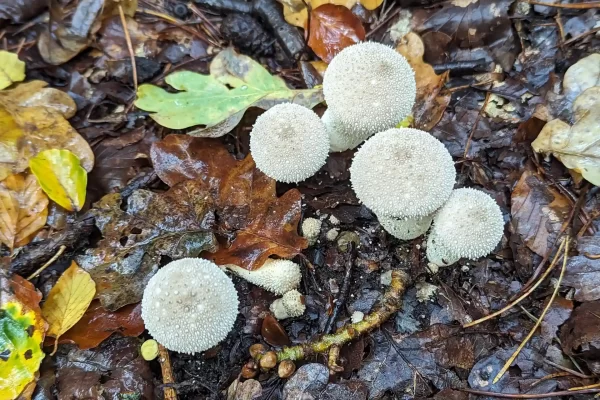
Brandon Country Park – 1st November 2023
We spotted what we initially thought was a slime mould but probably some type of corticioid fungi in an early stage.
A image search brings up Physisporinus vitreus that sort of looks similar.
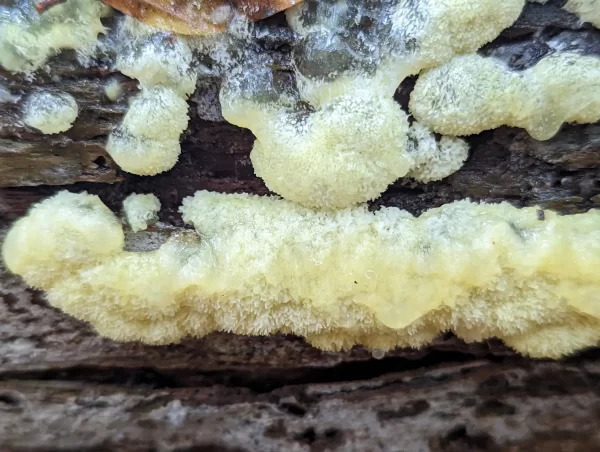
Brandon Country Park – 1st November 2023
Crossing the B1106 into Thetford forest we stumbled upon a lovely forked Typhula juncea (slender club).
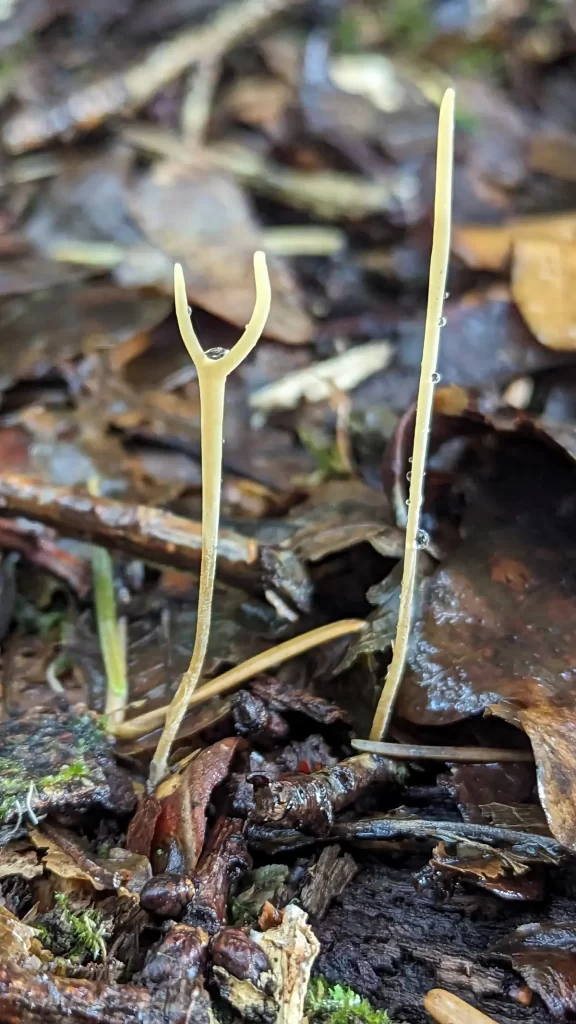
Thetford Forest – 1st November 2023
In the grassy verges of the sandy paths we spotted a number Coltricia perennis (tiger’s eye) which we also spotted in August .
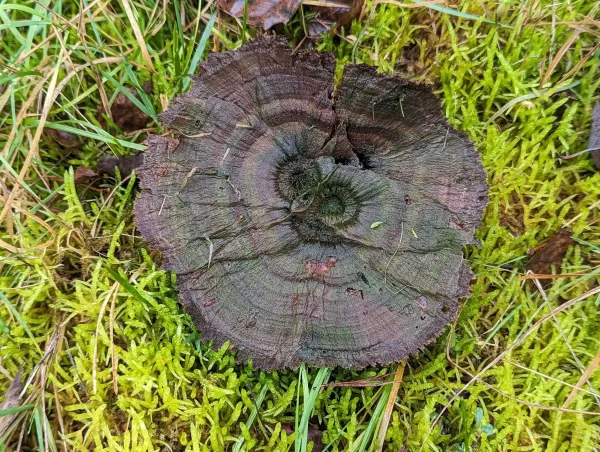
Thetford Forest – 1st November 2023
The following photo of a disturbed Coltricia shows the stem and cup, and—although blurred—the underside tube structure can be made out.
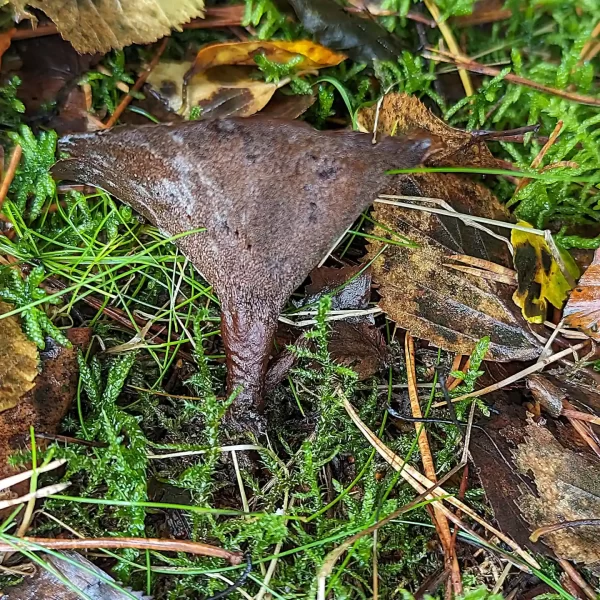
Thetford Forest – 1st November 2023
The area has sandy, acidic soils and the surrounding woodland is a mix of pine and deciduous trees.
Unknown tiny fungi growing on pine cones.
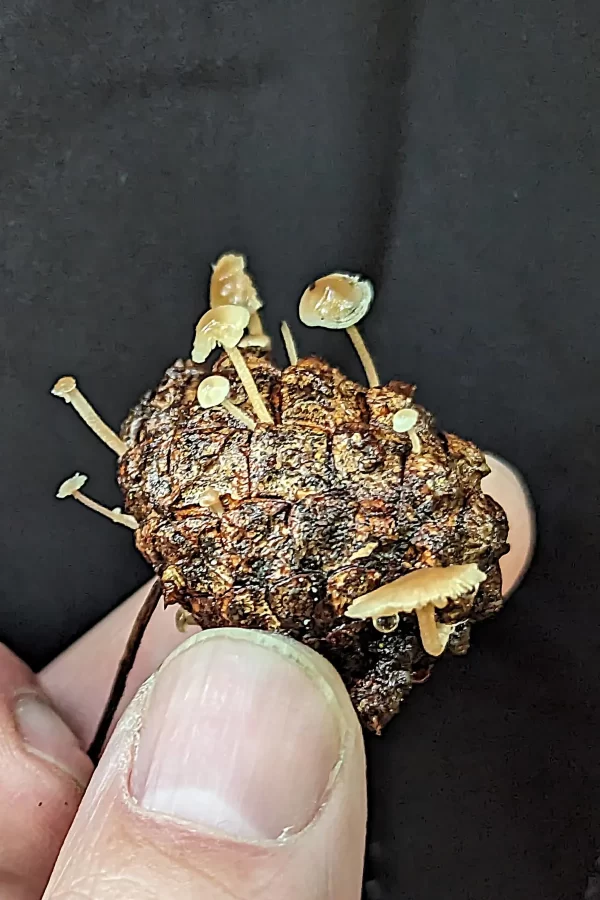
Thetford Forest – 1st November 2023
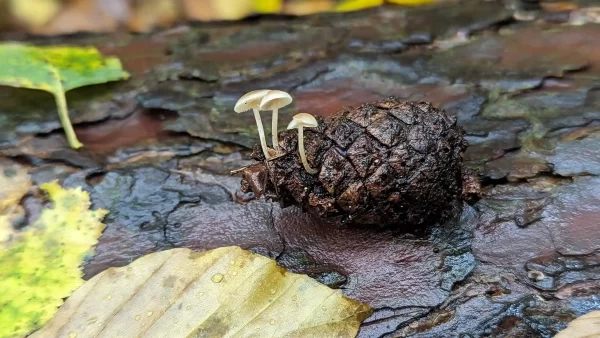
Thetford Forest – 1st November 2023
Some beautiful Crepidotus variabilis (variable oysterlings).
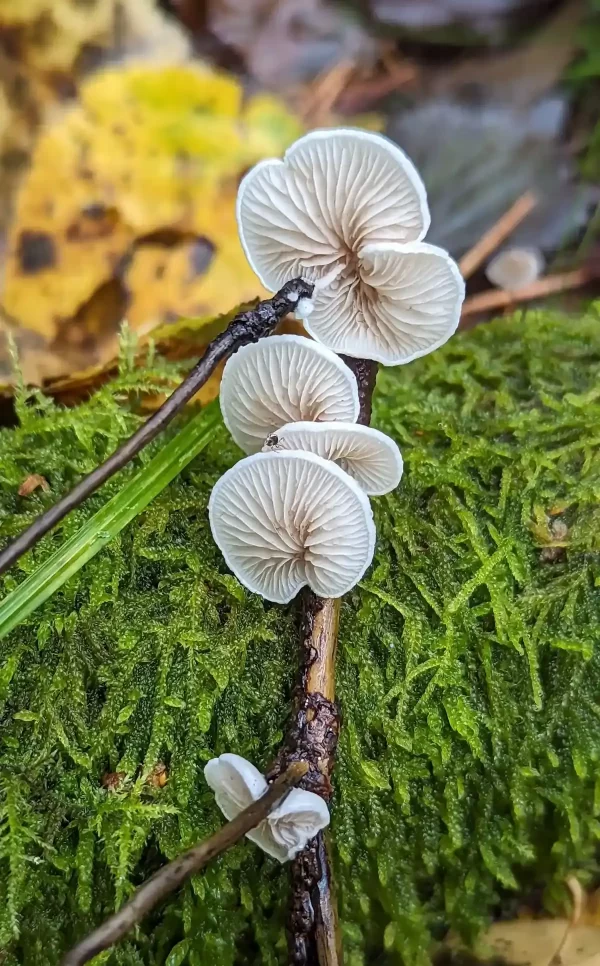
Thetford Forest – 1st November 2023
Death of a fungus.
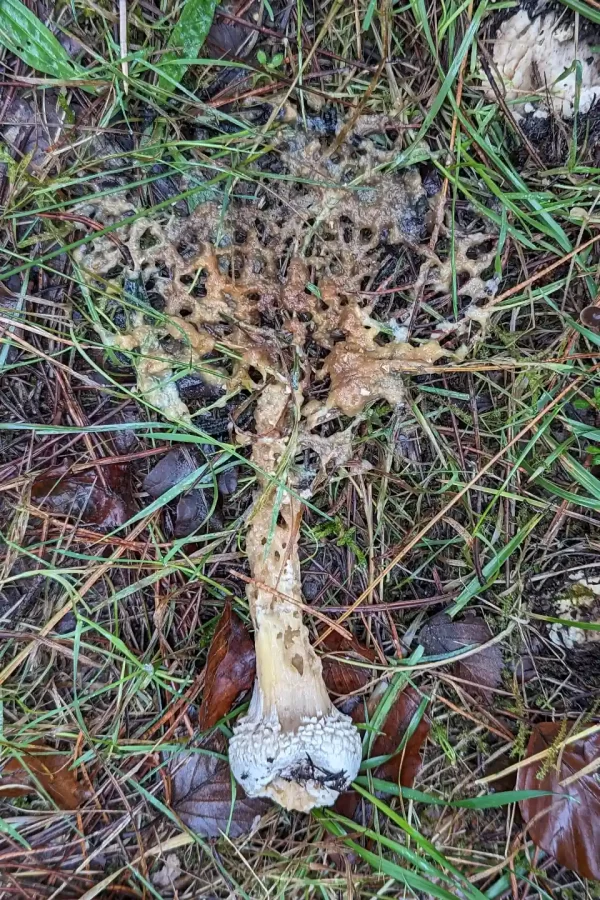
Thetford Forest – 1st November 2023
More probable corticioid fungi.
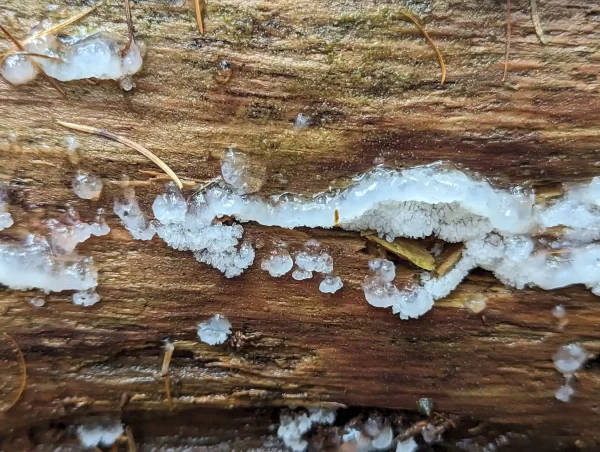
Thetford Forest – 1st November 2023
I am always struck at the coincidences of finding fungi, slime moulds and other small stuff – if you hadn’t of walked along that section of path or picked up that branch – if you had been looking the other way…
So it was when we came across the superb Spathularia flavida (yellow fan) under an area of conifers.
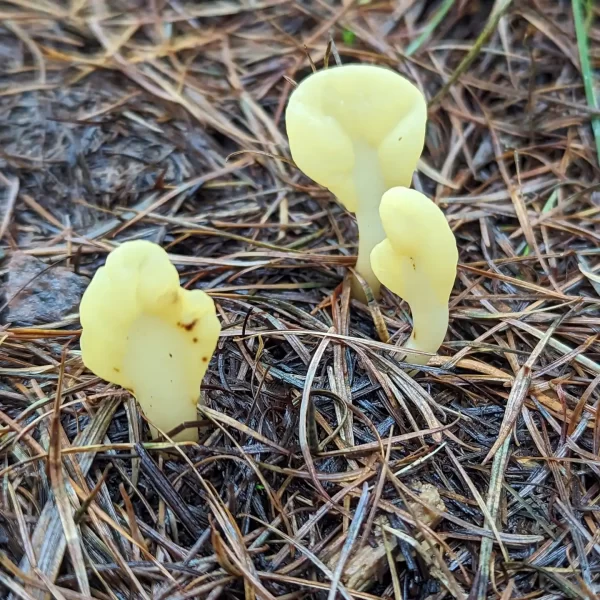
In the same patch of ground we found the always wonderful Calocera viscosa (yellow staghorn).
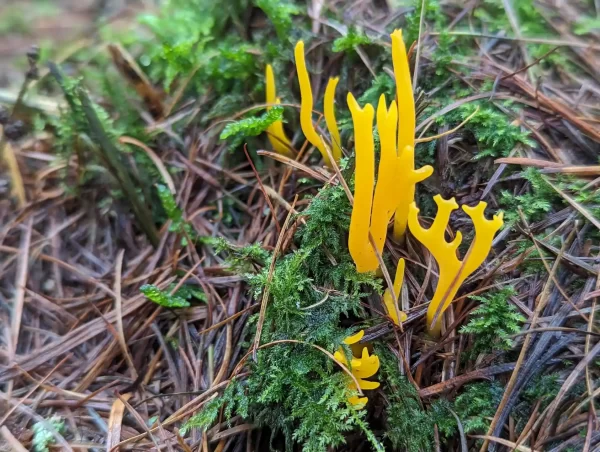
Thetford Forest – 1st November 2023
And multiple linear clusters of Ramaria.
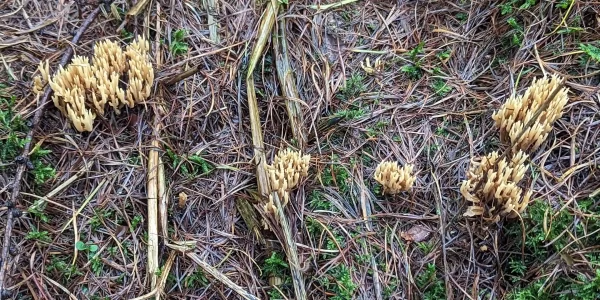
Thetford Forest – 1st November 2023
Trying to identify just from photos, I think these could be Ramaria abietina (greening coral).
First Nature states that R. abietina has laterally-compressed pointed tips — which I think these had — and is usually found on acidic soil forming large arcs beside the roots of conifers.
Ramaria flaccida and Ramaria stricta (upright Coral) have similar forms, however, whilst both do grow under conifers, R. flaccida has branches that are are noticeably crinkled with long tips but is infrequent in Britain and R. stricta ends in sharp tips.
After the Spathularia flavida we wandered back into Brandon Country Park.
Surely the fungi below are Tricholomopsis rutilans (plums and custard).
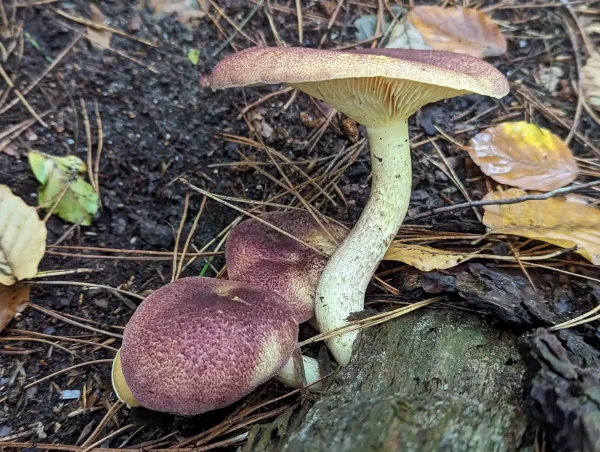
Brandon Country Park – 1st November 2023
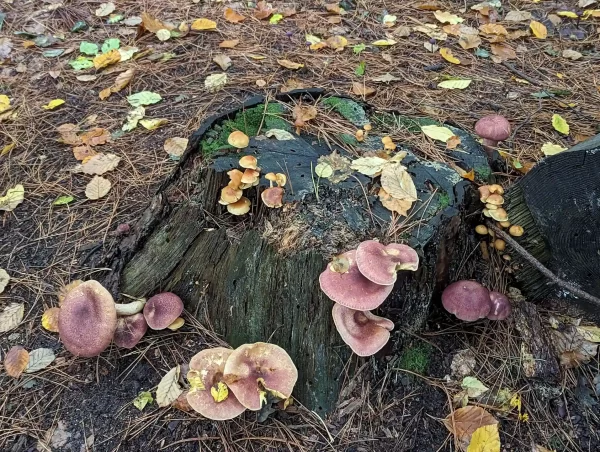
Brandon Country Park – 1st November 2023
Apricot-orange Tubifera ferruginosa sporocarps.
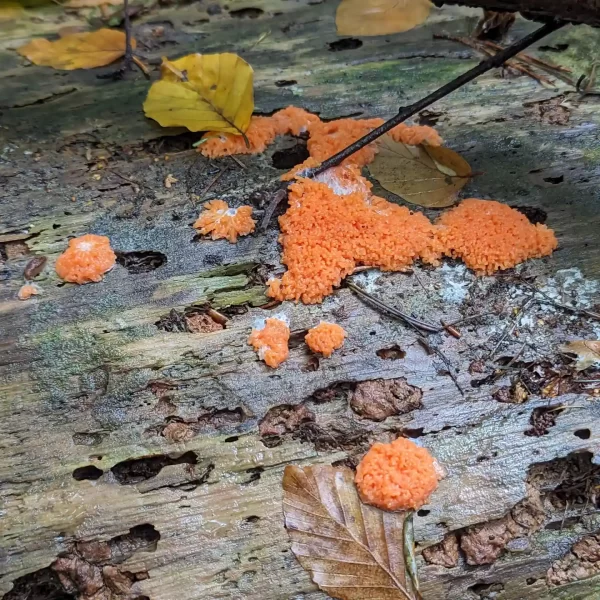
Brandon Country Park – 1st November 2023
On the same log, maturing T. ferruginosa sporocarps from the small young apricot-orange clump, to the fawn clumps and the more mature large black mass.
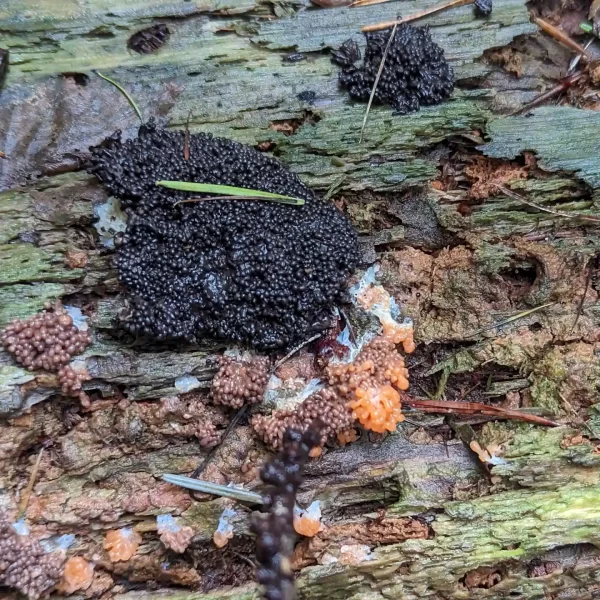
Brandon Country Park – 1st November 2023
The fungus below looks like Phlebia tremellosa (jelly rot). P. tremellosa is resupinate — a resupinate fungus consists of just a fertile surface with its back attached to the substrate.
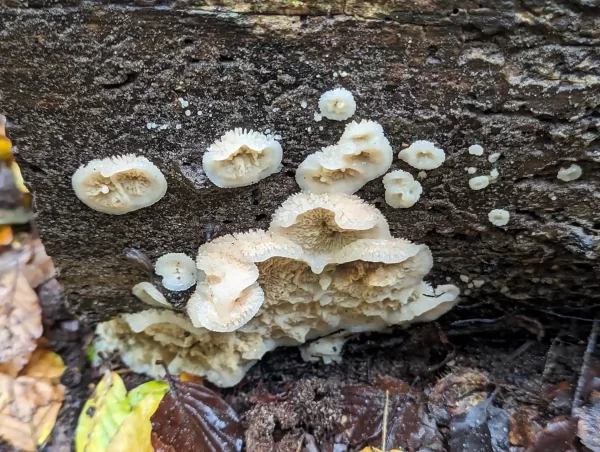
Brandon Country Park – 1st November 2023
The wrinkled underside is the fertile surface and the edges have reflexed away from the log showing the hair-like upper surface which is the back of the fungus.
https://www.messiah.edu/Oakes/fungi_on_wood/poroid%20fungi/species%20pages/Phlebia%20tremellosa.htm
https://www.first-nature.com/fungi/phlebia-tremellosa.php
The pileus is the cap of the fungus – a fungus with a pileus is said to be pileate.
A fungus lacking a pileus – that consists of just a fertile surface with its back attached to or intergrown with the substrate, is said to be resupinate.
Resupinate fungi usually grow on a substrate that is horizontal, like a fallen log.
https://www.mushroomthejournal.com/greatlakesdata/Terms/resup248.html
The mushrooms below are probably Chlorophyllum rhacodes (shaggy parasol) as the stems didn’t appear to have the snakeskin-like patterning of Macrolepiota procera.
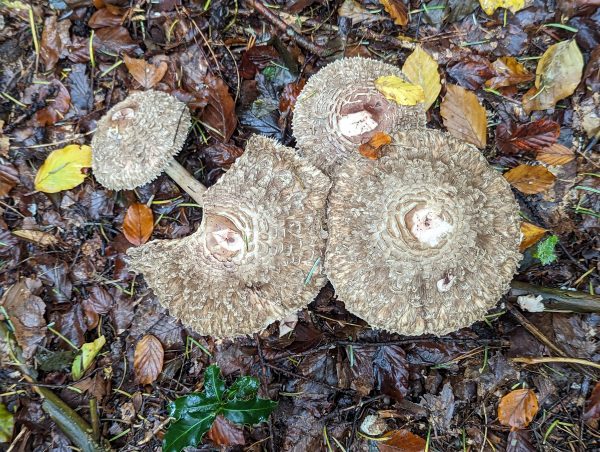
Brandon Country Park – 1st November 2023
The daughter thinks the two fungi below are Cantharellus tubaeformis (trumpet chanterelle) – a Google image search brings up a selection of suggestions that include C. tubaeformis.
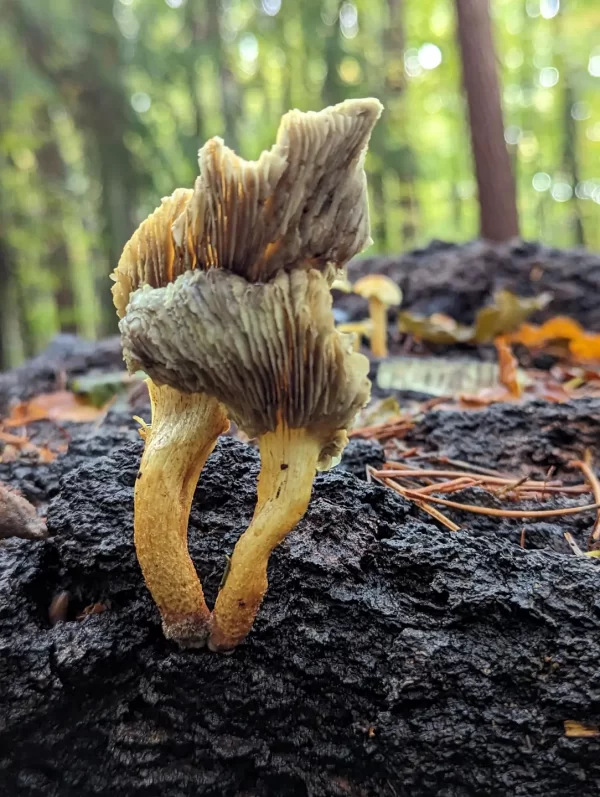
Brandon Country Park – 1st November 2023
A lovely Laccaria amethystina (amethyst deceiver).
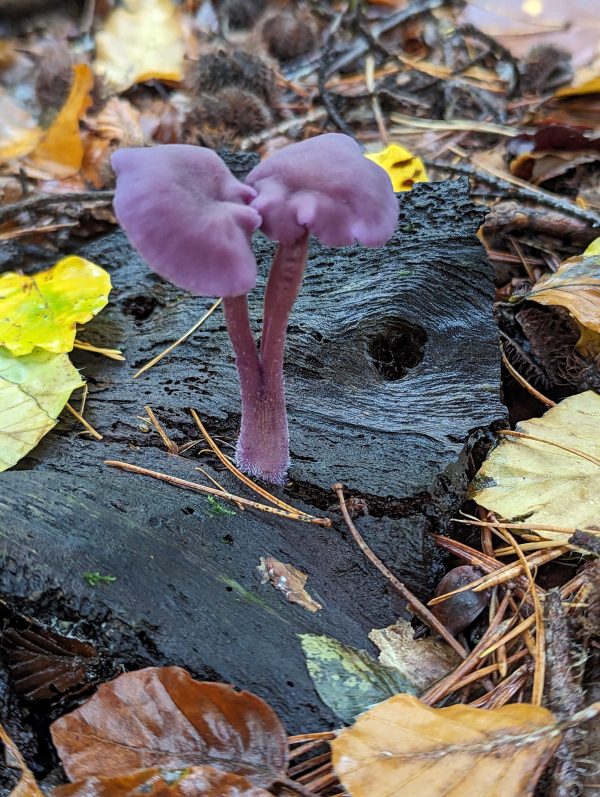
Brandon Country Park – 1st November 2023